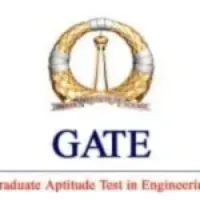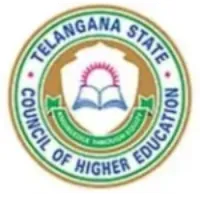Latest Applications Open 2024:
GATE 2025 Syllabus of Instrumentation Engineering has been Released. GATE 2025 is a national-level exam organized by IIT Roorkee. The Engineering Graduation Skill Test (GATE 2025) is organized for admission to PG courses in engineering and technology, specifically ME / M.Tech.
It’s a Graduate aptitude test for engineering. The Scores from GATE can help to get admissions in M. Tech/Ph.D. programs in multiple sectors like IITs & IISERs.
GATE exams are held yearly rotationally by the IITs & IISC in multiple zones. Not only for the examination but GATE Scores also play an essential role in recruiting the Government and private organizations in the technical field.
GATE 2025 Instrumentation Engineering Syllabus – PDF Released
GATE 2025 Instrumentation Engineering Syllabus has been Released. Click to Download Instrumentation Engineering Syllabus Pdf.
Section 1: Engineering Mathematics
Linear Algebra: Matrix algebra, systems of linear equations, Eigenvalues, and Eigenvectors.
Calculus: Mean value theorems, theorems of integral calculus, partial derivatives, maxima and minima, multiple integrals, Fourier series, vector identities, line, surface, and volume integrals, Stokes, Gauss, and Green’s theorems.
Latest Applications For Various UG & PG Courses Open 2024
-
- Parul University | Admissions Open for All Courses 2024. Apply Now
- Chandigarh University | Admissions Open for All Courses 2024. Apply Now
- NIIT | Admissions Open for All Courses 2024. Apply Now
- KL University | Admissions Open for All Courses 2024. Apply Now
- Alliance UG | Admissions Open for All Courses 2024. Apply Now
- GD Goenka | Admissions Open for All Courses 2024. Apply Now
Differential equations: First order equation (linear and nonlinear), higher-order linear differential equations with constant coefficients, Method of variation of parameters, Cauchy’s and Euler’s equations, Initial and boundary value problems, the solution of partial differential equations: variable separable method.
Analysis of complex variables: Analytic functions, Cauchy’s integral theorem, and integral formula, Taylor’s and Laurent’s series, residue theorem, a solution of integrals.
Probability and Statistics: Sampling theorems, conditional probability, mean, median, mode and standard deviation, random variables, discrete and continuous distributions: normal, Poisson and binomial distributions.
Numerical Methods: Matrix inversion, solutions of non-linear algebraic equations, iterative methods for solving differential equations, numerical integration, regression and correlation analysis.
Instrumentation Engineering
Section 2: Electrical Circuits:
Voltage and current sources: independent, dependent, ideal and practical; v-i relationships of the resistor, inductor, mutual inductor, and the capacitor; transient analysis of RLC circuits with DC excitation.
Kirchoff’s laws, mesh and nodal analysis, superposition, Thevenin, Norton, maximum power transfer, and reciprocity theorems.
Peak-, average- and RMS values of ac quantities: apparent-, active- and reactive powers; phasor analysis, impedance, and admittance; series and parallel resonance, locus diagrams, a realization of basic filters with R, L and C elements.
One-port and two-port networks, driving point impedance and admittance, open-, and short-circuit parameters.
Section 3: Signals and Systems
Periodic, aperiodic and impulse signals; Laplace, Fourier, and z-transforms; transfer function, the frequency response of first and second-order linear time-invariant systems, an impulse response of systems; convolution, correlation. Discrete-time system: impulse response, frequency response, pulse transfer function; DFT and FFT; basics of IIR and FIR filters.
Section 4: Control Systems
Feedback principles, signal flow graphs, transient response, steady-state-errors, Bode plot, phase and gain margins, Routh and Nyquist criteria, root loci, design of lead, lag and lead-lag compensators, state-space representation of systems; time-delay systems; mechanical, hydraulic and pneumatic system components, synchro pair, servo, and stepper motors, servo valves; on-off, P, P-I, P-I-D, cascade, feedforward, and ratio controllers.
Section 5: Analog Electronics
Characteristics and applications of the diode, Zener diode, BJT and MOSFET; small-signal analysis of transistor circuits, feedback amplifiers. Characteristics of operational amplifiers; applications of opamps: difference amplifier, adder, subtractor, integrator, differentiator, instrumentation amplifier, precision rectifier, active filters, and other circuits. Oscillators, signal generators, voltage-controlled oscillators, and phase-locked loops.
Section 6: Digital Electronics
Combinational logic circuits, minimization of Boolean functions. IC families: TTL and CMOS. Arithmetic circuits, comparators, Schmitt trigger, multi-vibrators, sequential circuits, flip-flops, shift registers, timers, and counters; sample-and-hold circuit, multiplexer, analogue-to-digital (successive approximation, integrating, flash and sigma-delta) and digital-to-analogue converters (weighted R, R-2R ladder and current steering logic). Characteristics of ADC and DAC (resolution, quantization, significant bits, conversion/settling time); basics of number systems, an 8-bit microprocessor, and microcontroller: applications, memory, and input-output interfacing; basics of data acquisition systems.
Section 7: Measurements
SI units, systematic and random errors in measurement, expression of uncertainty – accuracy and precision index, propagation of errors. PMMC, MI and dynamometer type instruments; DC potentiometer; bridges for measurement of R, L, and C, Q-meter. Measurement of voltage, current, and power in single and three-phase circuits; ac and DC probes; true RMS meters, voltage and current scaling, instrument transformers, timer/counter, time, phase and frequency measurements, digital voltmeter, digital multimeter; oscilloscope, shielding, and grounding.
Section 8: Sensors and Industrial Instrumentation
Resistive-, capacitive-, inductive-, piezoelectric-, Hall effect sensors and associated signal conditioning circuits; transducers for industrial instrumentation: displacement (linear and angular), velocity, acceleration, force, torque, vibration, shock, pressure (including low pressure), flow (differential pressure, variable area, electromagnetic, ultrasonic, turbine, and open channel flow meters) temperature (thermocouple, bolometer, RTD (3/4 wire), thermistor, pyrometer, and semiconductor); liquid level, pH, conductivity and viscosity measurement.
Latest Applications For Various UG & PG Courses Open 2024
-
- Parul University | Admissions Open for All Courses 2024. Apply Now
- Chandigarh University | Admissions Open for All Courses 2024. Apply Now
- NIIT | Admissions Open for All Courses 2024. Apply Now
- KL University | Admissions Open for All Courses 2024. Apply Now
- Alliance UG | Admissions Open for All Courses 2024. Apply Now
- GD Goenka | Admissions Open for All Courses 2024. Apply Now
Section 9: Communication and Optical Instrumentation
Amplitude- and frequency modulation and demodulation; Shannon’s sampling theorem, pulse code modulation; frequency and time division multiplexing, amplitude-, phase-, frequency-, pulse shift keying for digital modulation; optical sources and detectors: LED, laser, photo-diode, light-dependent resistor, and their characteristics; interferometer: applications in metrology; basics of fiber optic sensing.
If you any queries regarding the GATE 2025 Instrumentation Engineering Syllabus, you can ask your query and leave comments below.

As a dedicated Biology Science graduate, I’m passionate about sharing the latest updates in national and state entrance exams through my blog. I aim to keep aspiring students informed about exam trends, important dates, and changes in syllabi. With a keen interest in education, I strive to offer valuable insights for students navigating the competitive landscape of entrance examinations and admission tests. Stay updated with me.

